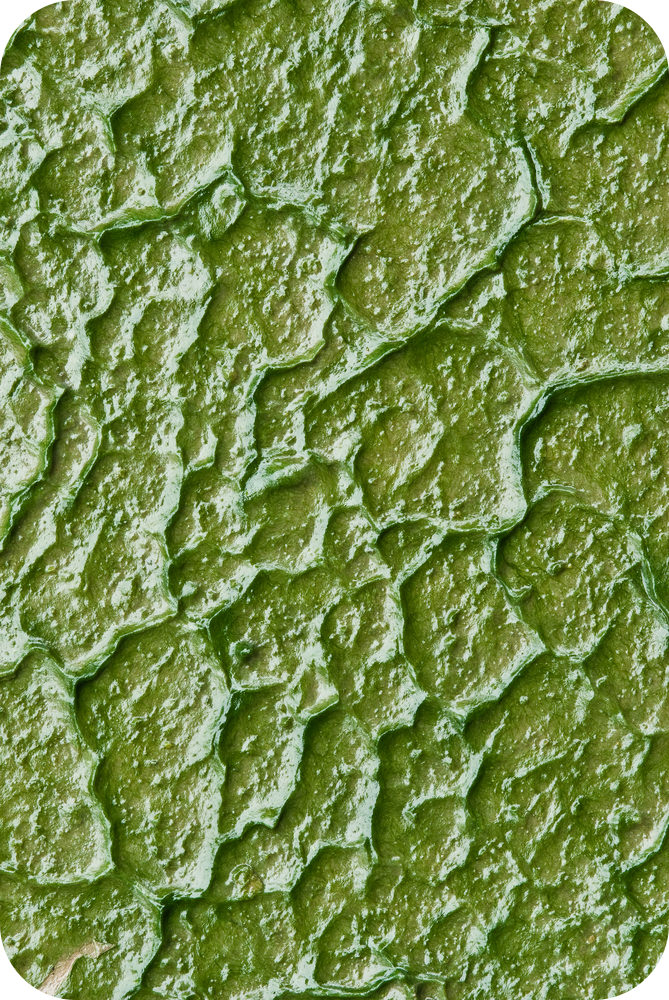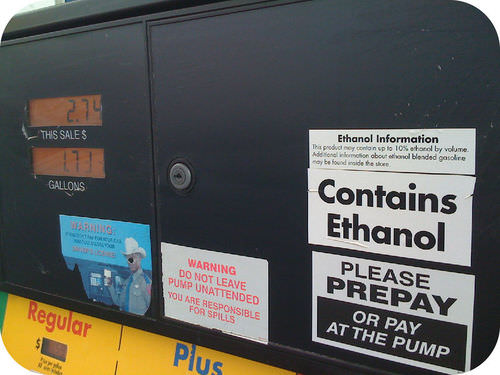
Algae is a better alternative for producing biofuel than traditional crops because crops could be used for other things, like feeding people.
Biomass
Biomass is the material that comes from plants and animals that were recently living. Biomass can be burned directly, such as setting fire to wood. For as long as humans have had fire, people have used biomass for heating and cooking. People can also process biomass to make fuel, called biofuel. Biofuel can be created from crops, such as corn or algae, and processed for use in a car (Figure below). The advantage to biofuels is that they burn more cleanly than fossil fuels. As a result, they create less pollution and less carbon dioxide.

Biofuels, such as ethanol, are added to gasoline to cut down the amount of fossil fuels that are used.
Organic material, like almond shells, can be made into electricity. Biomass power is a great use of wastes and is more reliable than other renewable energy sources, but harvesting biomass energy uses energy and biomass plants produce pollutants including greenhouse gases.
Cow manure can have a second life as a source of methane gas, which can be converted to electricity. Not only that food scraps can also be converted into green energy.
Food that is tossed out produces methane, a potent greenhouse gas. But that methane from leftovers can be harnessed and used as fuel. Sounds like a win-win situation.
Consequences of Biomass Use
In many instances, the amount of energy, fertilizer, and land needed to produce the crops used make biofuels mean that they often produce very little more energy than they consume. The fertilizers and pesticides used to grow the crops run off and become damaging pollutants in nearby water bodies or in the oceans.
To generate biomass energy, break down the cell walls of plants to release the sugars and then ferment those sugars to create fuel. Corn is a very inefficient source; scientists are looking for much better sources of biomass energy.
Algae Biofuels
Research is being done into alternative crops for biofuels. A very promising alternative is algae. Growing algae requires much less land and energy than crops. Algae can be grown in locations that are not used for other things, like in desert areas where other crops are not often grown. Algae can be fed agricultural and other waste so valuable resourcesare not used. Much research is being done to bring these alternative fuels to market. Many groups are researching the use of algae for fuel.
Many people think that the best source of biomass energy for the future is algae. Compared to corn, algae is not a food crop, it can grow in many places, it's much easier to convert to a usable fuel, and it's carbon neutral.
Summary
Biofuels are useful because they are liquid and can go into a gas tank unlike many other types of alternative energy.
Algae is the focus of much research because it is a very promising alternative to traditional crops for biofuels.
Biofuels have been used for as long as people have been burning wood for warmth or to cook their food.

No comments:
Post a Comment